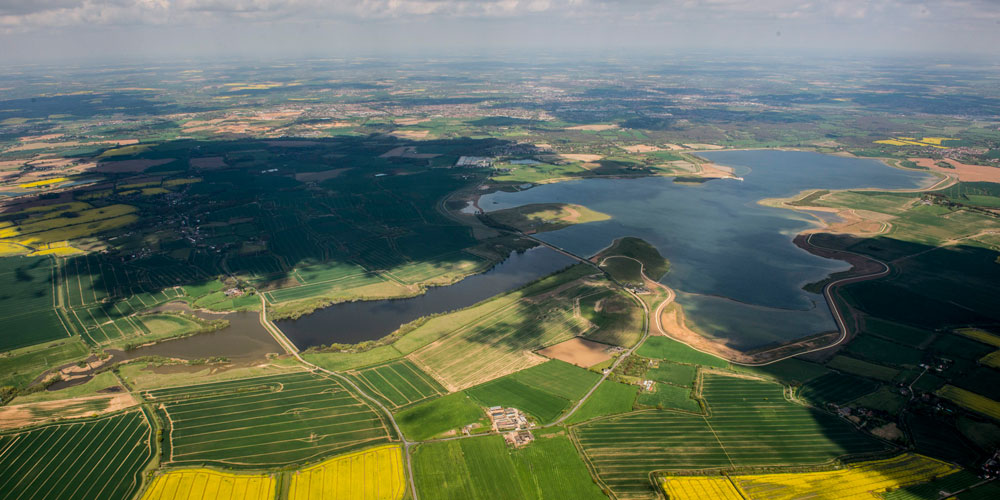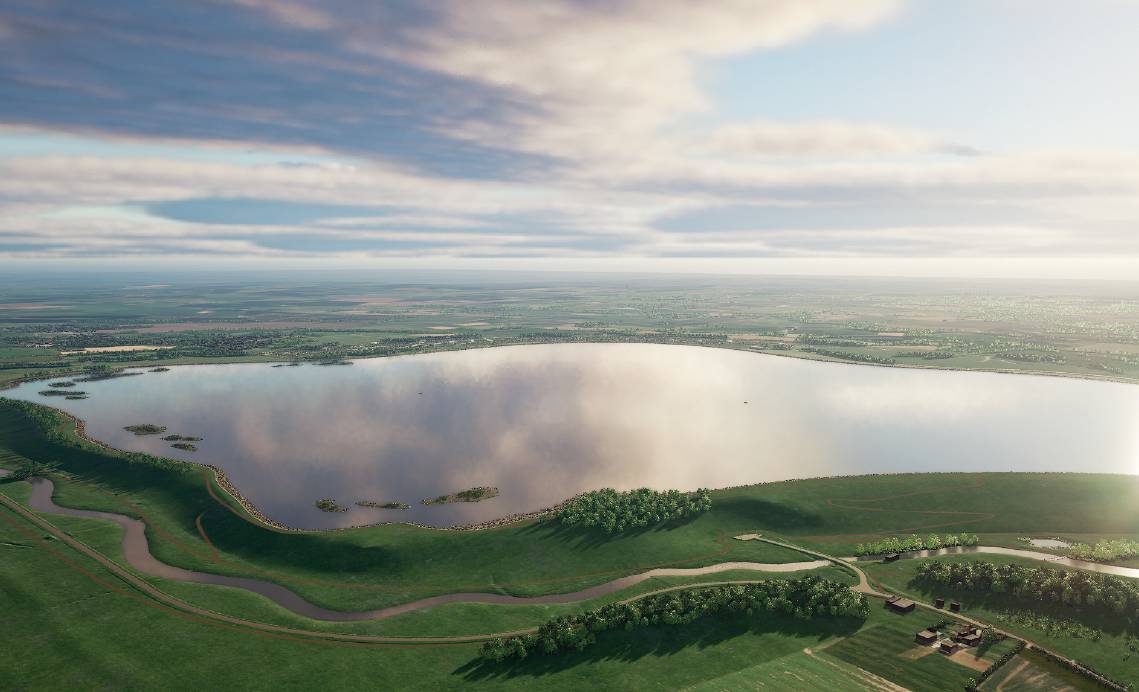Future of Water | Overview
Expansive thinking
Reservoir expansion is a viable way to increase water storage capacity, so why are such projects underrepresented in water companies’ latest plans? Belinda Smart reports.
People are using more water, which is aligned to the growing population and changing lifestyles, and we need to meet that need,” says Thames Water strategic partnerships director Nevil Muncaster. “With climate change meaning longer, hotter, dry summers, we need to make sure that we’re resilient against drought and that water is always available,” he adds.
These challenges are reflected in the major water companies’ investment proposals for the AMP8 spending programme which runs from 2025 to 2030. These were submitted to regulator Ofwat in October.
 Abberton Reservoir is seen as an ecological success story
Abberton Reservoir is seen as an ecological success story
The plans are the mechanisms to achieve targets set out in companies’ longer term water resource management plans (WRMPs).
The water companies’ proposals for AMP8 outline a combined investment of £96bn in improving the clean water supply reliability and reducing sewage spills into rivers and seas.
Proposed supply resilience measures include water transfer schemes, leak reduction and the construction of new reservoirs. But there are no plans to expand existing reservoir capacity. Reservoir expansion entails raising the height of the walls retaining the water or widening a reservoir’s footprint, including reprofiling its shoreline.
There are several projects of this type around the world. In the United States, Denver Water’s £464M Gross Reservoir expansion project in Colorado is underway (see 'Capacity boost'), while a £817M plan to raise the BF Sisk dam in California was approved in October. This will add 160M.m3 to the capacity of the San Luis Reservoir.
A significant reservoir expansion in the UK in recent years was that of Essex & Suffolk Water’s Abberton Reservoir near Colchester in Essex which reopened in 2015.
Although the project is cited by the water company as a success, fellow utilities have opted for other solutions to tackle future water supply issues.
KEY FACT
41M.m3Capacity of Abberton Reservoir after expansion work
ENGINEERING CHALLENGES
One reason why reservoir expansion is not a focus for water companies is the scale of the engineering challenges associated with such projects, explains GHD UK market leader for water John Hensman.
“Sometimes changing the structure of something that’s already been built can be harder than building something new,” he says.
“Sometimes changing the structure of something that’s already been built can be harder than building something new
According to Hensman, designing reservoir expansions can be complex, as the design teams have to consider key parameters such as the potential risk of flood impacts as well as encroachment onto forests and national parks.
“Geotech investigations are also crucial, as these feed into a detailed geological 3D model and enable the finite element method to be developed with realistic assumptions on the behaviour of foundations.”
Hensman adds that enlarging the perimeter of a reservoir often comes with geotechnical challenges. For example, widening a reservoir involves significant changes to slopes, which are difficult to stabilise.
Damsolve director Peter Mason agrees that geotechnical considerations are critical. He cites the Derwent Valley, where until recently Severn Trent Water had been considering reservoir expansion.
“The ground there is quite permeable and the two big dams in the Derwent Valley, the Derwent and the Howden, have big cut off walls that go down into their foundations.”
“In such cases it’s not just a question of raising the dam. You’d have to raise all those internal cut off walls in the hillsides as well.”
“When you raise a dam – if there are embedded or low level outlets and gates and valves and pipes, although all those will be operating at a higher head once the dam is raised, they’ll have a higher pressure. So, you’d have to be sure that they were safe against the higher pressure.”
EXPANSIONS SCRAPPED
As of September, Severn Trent Water’s plans to raise the height of one or more of the Upper Derwent Valley dams – Ladybower, Derwent and Howden – have been removed from the company’s WRMP.
Severn Trent Water dams and reservoirs manager Ian Hope confirms that permeable ground along with other geotechnical factors influenced the decision.
“It’s not just a question of raising the dam. You’d have to raise all those internal cut-off walls in the hillsides as well “In some places there was highly fissured rock, so underground works would have been needed to render the strata watertight enough to hold the water. More than half the construction work would be taking place below ground, so that was something we had to bear in mind.”
But Severn Trent stakeholder engagement lead Sarah-Jayne O’Kane says that the plans to expand its reservoirs could be executed in the long term should the need arise.
Meanwhile Muncaster confirms that Thames Water has decided not to pursue reservoir expansion plans in the South East. Instead, it is focusing on initiatives including the South East Strategic Reservoir Option, a new reservoir in Oxfordshire (see box).
SUCCESS STORY
Nonetheless, Essex & Suffolk Water’s Abberton Reservoir expansion has provided resilience, along with environmental and biodiversity gains. It is 6km south west of Colchester near the village of Layer de la Haye.
The water company started the £150M expansion in 2010, ultimately increasing the reservoir’s capacity from 26M.m3 to 41M.m3.
The project’s ultimate success did require challenges to be overcome. Daniel Wilson, project manager for Essex & Suffolk Water’s parent company Northumbrian Water acknowledges that expanding a reservoir originally constructed between 1935 and 1939 was subject to “operational constraints that you wouldn’t encounter if you were building a new reservoir from scratch.”
One of these was the presence of the Layer de la Haye Water Treatment Works which treats the reservoir water. “In increasing the height of the reservoir, the existing pumping station had to be submerged. So we had to construct a temporary pumping station on the shores of Abberton Reservoir, then we had to knock down the existing pumping station. We had to raise the substructure and then rebuild the superstructure on top of that to look like the original building did in the 1930s.”
“Part of the project was removing the steep concrete pitching and slackening the banks back to a one in 10 gradient
The reservoir was originally built with a steep one-in-three gradient concrete embankment around it and had an “aggressive appearance on the landscape,” says Wilson. “Part of the project was removing the steep concrete pitching and slackening the banks back to a one in 10 gradient. Instead of reinstating the shoreline with concrete, it was allowed to be a naturally profiled embankment, which created wildlife habitats.”
“The shoreline reprofiling required that the reservoir be broken down into four areas and while we were doing the reprofiling, we were only allowed to work in one of those, so species always had a safe refuge. This division meant there would be limited displacement habitat in the reservoir that wildlife species could use.
“So, part of the project was the construction of 6ha of additional wetland around the western end of the reservoir to serve as additional displacement habitat.”
Abberton Reservoir is a designated Site of Special Scientific Interest (SSSI), a special protection area (SPA) and a Ramsar site. Ramsar sites are wetlands of international importance as defined by the 1971 Ramsar Convention signed in Ramsar, Iran.
The additional wildlife amenity following the expansion has proven to be one of the reservoir’s best assets, Wilson says.
It’s an achievement that was endorsed when the reservoir was opened by Sir David Attenborough in 2015. Wilson says: “He was delighted, and he made a comment that we still reflect on. He said this was a project that demonstrates that the environment and ecology can go hand in hand with construction when people put their minds to it.”
THAMES WATER’S NEW RESERVOIR PROPOSAL
For Thames Water, the planned South East Strategic Reservoir Option (Sesro), shows why building a new reservoir can be preferable to expansion, says Thames Water strategic partnerships director Nevil Muncaster.

Sesro is included in Thames Water’s revised water resource management plan and involves building a new reservoir in the Upper Thames catchment, south west of Abingdon in Oxfordshire.
Muncaster says one reason for building the new reservoir was that the South East is highly urbanised, with many existing reservoirs abutting built-up areas.
He adds that planning the scheme from scratch and being able to select a specific site could offer benefits during construction. Sesro will be close to the Great Western Railway and during construction Thames Water hopes to use it to bring in materials.
Sesro was submitted to the then-environment secretary Thérèse Coffey in August. Subject to ministerial approval and planning permission, construction is expected to take place from 2029 to 2037. The reservoir will take two years to fill before becoming fully operational in 2040.
Significantly, Thames Water has decided to build the reservoir to its largest possible capacity.
“We’re proposing to build the reservoir to 150M.m3, which is the largest size you can reasonably get in that area,” says Muncaster.
“Our approach is to build it once and build it to the optimum size. The impact on bills for the extra volume we will get is relatively low and the scheme will provide resilience for years to come.”